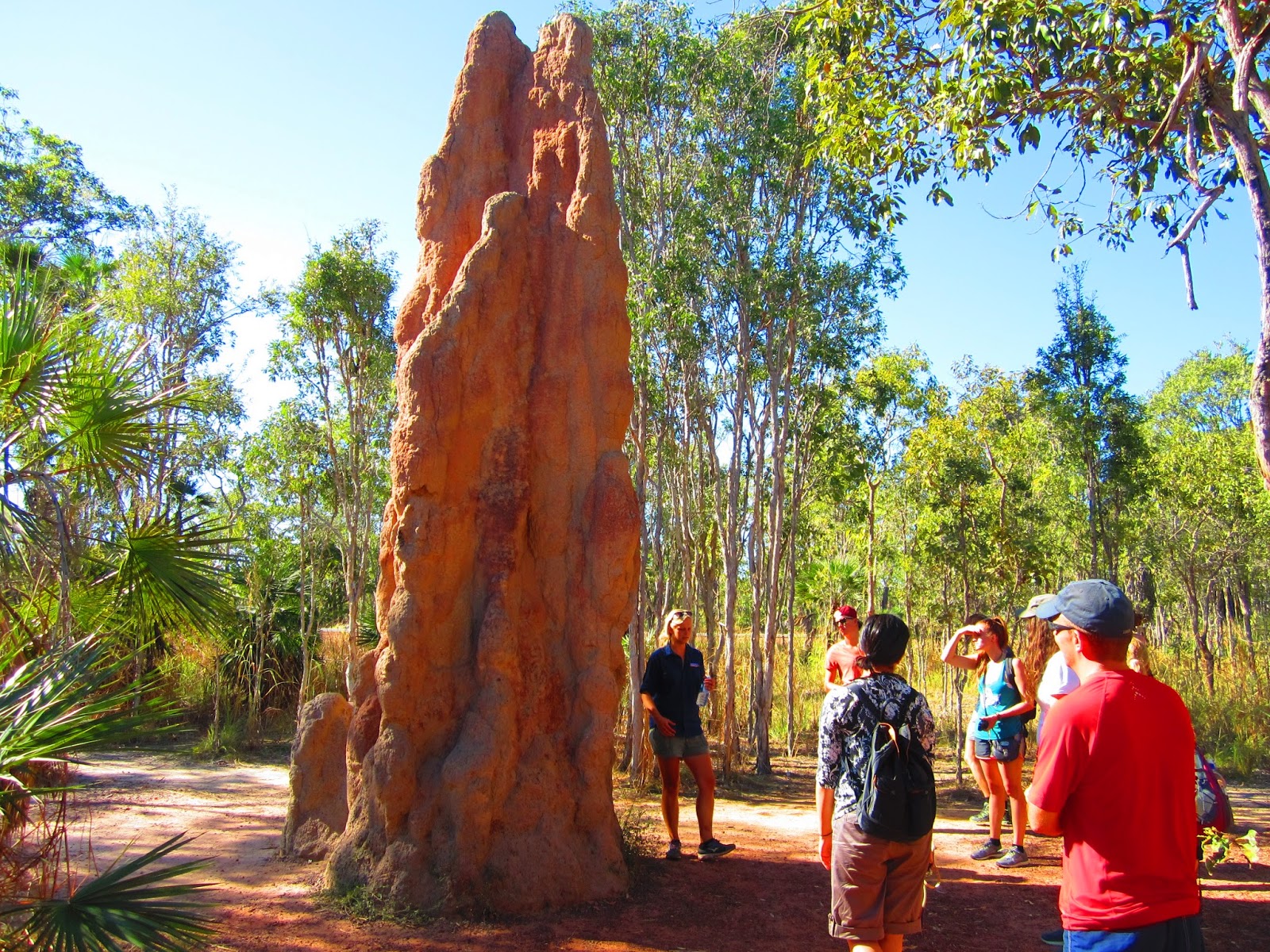After our tour of the nearby national parks, we left Darwin for the last time, heading south on the Stuart Highway (the path of which was originally developed when a telegraph system connecting southern Oz to the north was being put into place) into the Red Centre of Australia.
Strangely, it was only on our third pass through the tiny town of Adelaide River that someone finally mentioned to us that the buffalo from the movie Crocodile Dundee was a resident of this area and is now stuffed for posterity and lives in a roadside bar. (Though clearly I didn't remember the buffalo from Crocodile Dundee, or I wouldn't have been surprised to see a buffalo at Mary River.)
On our way south, we hit several hotsprings (this one called Bitter Springs, though it was sweetly warm and soothing),
checked out the huge, rounded boulders of Karlu Karlu,
camped at night at outback cattle stations (this pic a view of Banka Banka cattle station at sunrise), including our first experience of sleeping under the stars in traditional swag,
and ate most of our meals cooked on "the barbie." Oh so Australian!
As you may know, Australia has a shocking variety and concentration of dangerously venomous spiders and snakes, and we also got some exposure to those creepy crawlies. A park ranger who had just finished telling us a bit about the old telegraph station we were visiting pointed out this spider and gleefully said it was capable of killing a person.
And keeping lethal snakes in glass cages seems to be a favorite hobby of a lot of the roadhouse owners on the Stuart Highway. This python isn't venomous, though.
Then there was the expected (but still startling) assortment of completely wacky stuff that one tends to find at very rural rest stops in the States, as well. Some of my favorites were the ode to the Pink Panther (including the one in a plane in the upper left of the frame) at Larrimah...
...the every-surface-covered-with-stuff-stapled-to-the-wall-by-travelers at the iconic Daly Waters Pub...
...the Roswell-like, alien-obsessed Wycliffe Well...
...and the massive Aboriginal sculptures at Aileron. (Those are normal-sized trees in the background, to give you an idea of the scale.)
Somehow, three days on the road just flew by, and not only because of the Northern Territory's experiment with no speed limit on much of the Stuart Highway.
The road was often so empty that we stopped to take pictures playing in it. S got this one of me mid-cartwheel. The one where all twelve of us on the tour at that point pretend to be roadkill is a little disturbing, so I'll spare you that. But we had fun.



























































